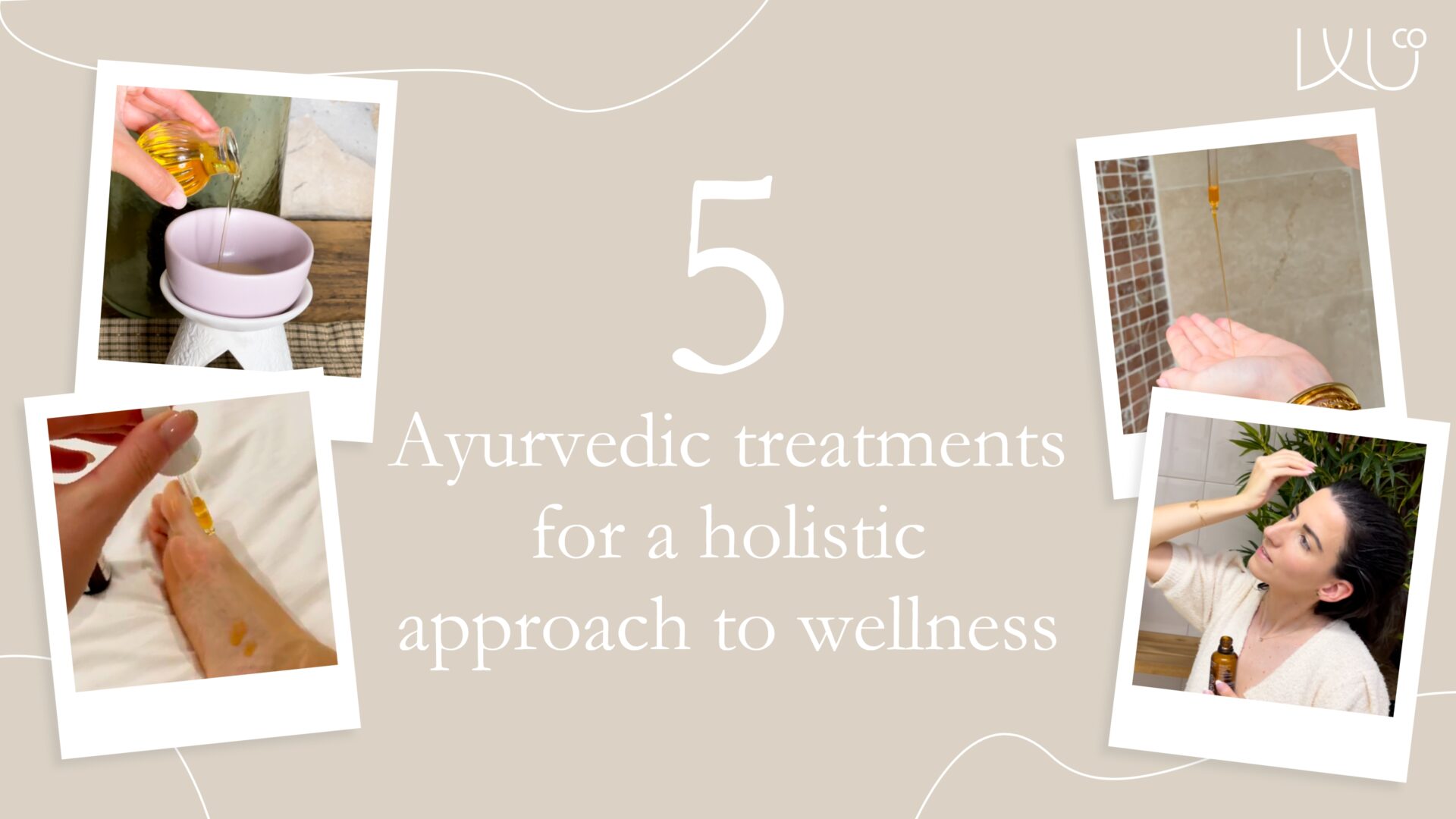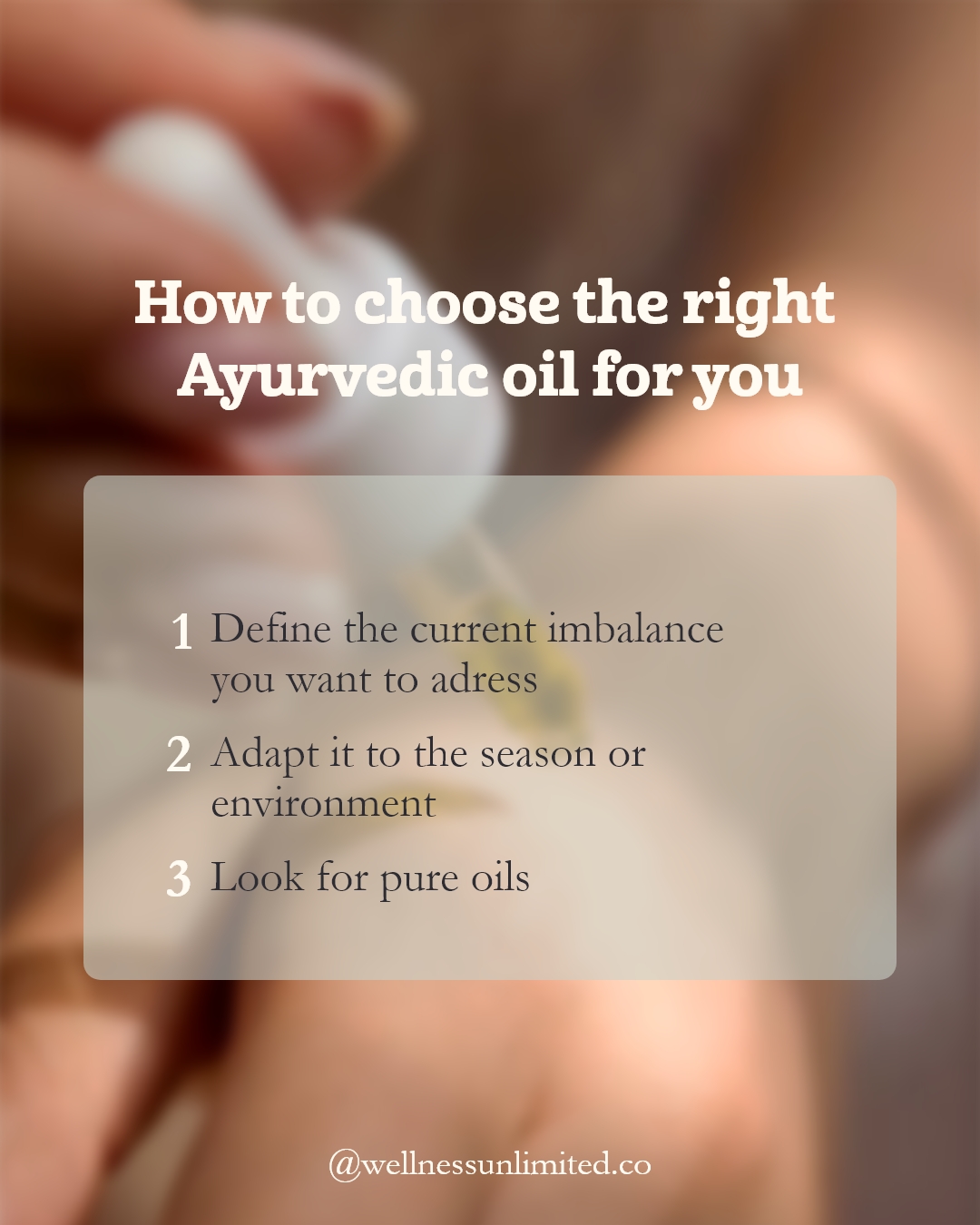
Before sharing my experience with 5 Ayurvedic treatments, let’s first explore the roots of Ayurveda and its primary objectives. Ayurveda is a traditional system of medicine that originated in India over 5,000 years ago. The word “Ayurveda” comes from the Sanskrit words “Ayur” which means life and “Veda” which means knowledge or science. It’s based on the belief that health and wellness depend on a delicate balance between the mind, body, and spirit. Ayurvedic treatments aim to promote good health, prevent disease, and treat illness through a holistic approach that includes Ayurvedic massage, diet, lifestyle modifications, herbal remedies, meditation, and yoga. They are also designed to help balance the three doshas or principal energies of the body: Vata, Pitta, and Kapha. In this blog, we will focus on five Ayurvedic treatments that can support overall wellness.
The use of oils is a fundamental aspect of Ayurvedic treatments. Ayurvedic practitioners believe that different types of Ayurvedic oils can have different effects on the body and mind, and can help to balance doshas or energies in the body.

Choosing the right Ayurvedic oil for your body type and needs is important to ensure that you get the most benefit from your Ayurvedic treatment.
By considering these factors, you can choose an oil for your Ayurvedic treatment that suits your body type and needs. A trained Ayurvedic therapist can help you select the best oil based on these factors to enhance the effectiveness of your Ayurvedic massage.
While receiving a professional Ayurvedic massage can be a great way to relax, it’s not always possible. Fortunately, self-massages are a great alternative that you can practice in the comfort of your own home. In fact, it can be a daily ritual of self-love that you can look forward to.
To get started with self-massage, you can begin with the two easiest ones: scalp and feet.
Making self-massage a part of your daily routine can have numerous benefits. It includes reducing stress, improving sleep quality and enhancing overall well-being. So why not take some time for yourself today and give Ayurvedic self-massages a try?
The word “abhyanga” comes from Sanskrit and means “oil massage.” It is a traditional full-body Ayurvedic massage that uses slightly heated oil, generally with a candle, that is applied to the entire body, from head to toe, followed by gentle strokes to release stress, improve circulation and relieve inflammation.
There are numerous benefits to Abhyanga massages. First and foremost, the use of warm oil during the Ayurvedic massage helps to nourish and hydrate the skin and body. Additionally, the massage can help to improve circulation, stimulate the lymphatic system, and promote detoxification. Abhyanga massages have also been shown to reduce stress and anxiety, promote better sleep, and enhance overall feelings of well-being.
Abhyanga massage can be different every time you try it depending on the therapist and the techniques they use. They usually start at your feet and work their way up to your head, using gentle strokes to help you relax and ease any tension. The massage oil is warm, which can leave your skin feeling nourished and hydrated, but also a bit oily. It’s best to take a warm shower after the massage to remove the excess oil. During the leg massage, you might feel a bit invigorated, almost like you’re getting a lymphatic massage. Overall, the experience is very relaxing and can make you feel calm and sleepy. So, don’t plan anything too important afterwards, as you’ll want to keep that sense of tranquillity. Plus, your body and hair will be oily, which can be a bit messy.
Marma therapy involves the stimulation of specific points on the body, known as marmas. These points are believed to be vital energy centres that connect the physical body to the mind and spirit.
This Ayurveda therapy can relieve pain, improve circulation, reduce stress, and boost immunity by promoting natural healing processes in the body.
During a Marma therapy session, the Ayurvedic therapist will use gentle pressure on specific points in the body to stimulate the flow of energy. You can do it fully clothed if you opt for pure Marma therapy. However, I prefer to have it done in combination with an Abyhanga massage to enjoy the benefits of both.
The Ayurveda therapist pours warm oil in a gentle and steady stream over your forehead and the third eye during the treatment, using a special rhythmic swaying movement.
This Ayurvedic treatment can help to calm the mind, reduce stress and anxiety, promote better sleep, and improve concentration. Shirodhara is also believed to have a positive effect on the nervous system, promoting relaxation and reducing tension throughout the body.
Based on my personal experience, I found it more comfortable to have my eyes closed naturally than having cotton pads on my eyes to avoid the oil going into them. Depending on the setup, the massage table or the head part of it may be tilted backwards a bit to allow for the Ayurvedic oil to evacuate which can be a little strange. It can be great to combine Shirodhara with an Abhyanga massage.
This treatment involves applying Ayurvedic oil to the nostrils after a small massage of the face and shoulders, followed by Swedana, warming or sweating of the face.
It can help relieve sinusitis and allergic rhinitis as well as stress and emotional disturbances.
You might be a little apprehensive to have it at first as the oil goes into your nose, but it is really nothing to worry about. You may feel the oil go down your throat and taste it. I like to do this before a flight to avoid dryness and in case of a headache with pure sesame oil.
It consists of applying oils in the ears following a cleanse and massage together with Swedana, warming or sweating of the area.
This treatment is known to be a relaxing Ayurveda therapy that can help cleanse and open channels, providing maintenance of good ear health. Additionally, it can help alleviate stress and anxiety, improve hearing and balance, and reduce earaches, tinnitus, and other ear-related problems.
The Karnapura treatment is not the go-to if you want a purely indulgent and relaxing experience. You can expect a gentle massage around the ear area to help the oil penetrate deep into your tissues. Once that’s done, your ears will be covered with a cloth and gently warmed for a few minutes. Finally, the therapist will help you sit up and drain any excess oil from your ears.
Whether you opt for a professional Abhyanga massage or prefer practising Ayurvedic self-massage at home, incorporating these Ayurvedic treatments into your daily routine can bring about numerous benefits for your overall well-being.
Personally, making Ayurveda treatments a part of my wellness practices has changed my life. Just remember to choose the right Ayurvedic oil for your body type and needs. Give it a try and see how it works for you!

Discovering the transformative power of an anti-inflammatory lifestyle has been my personal journey of healing and growth. Through my own experiences and dedicated study, I’ve compiled years of insights, which I’ve poured into this ebook.
Inside, you’ll discover: